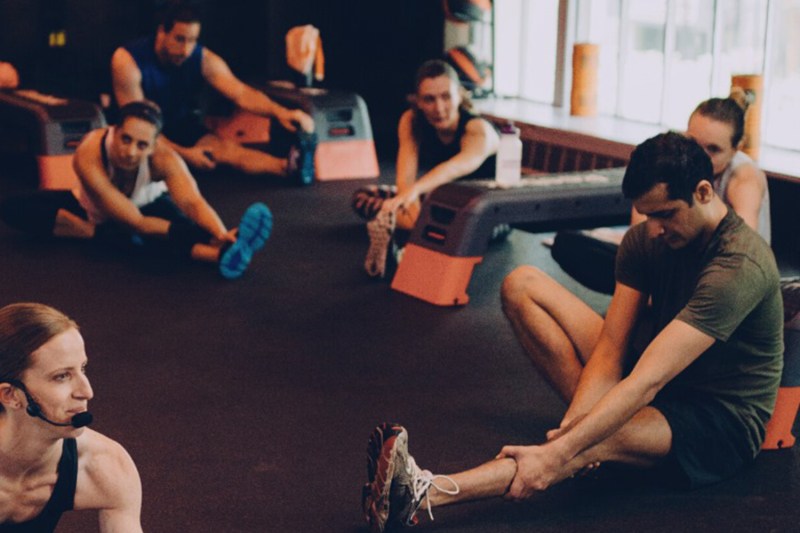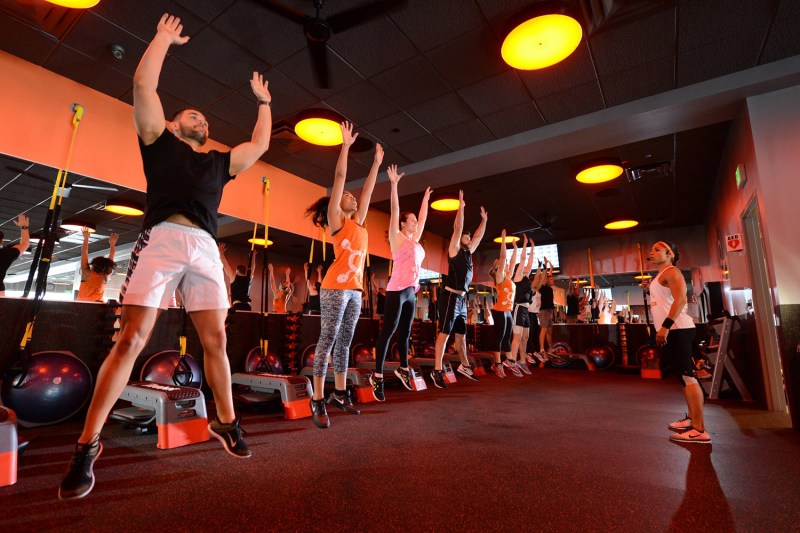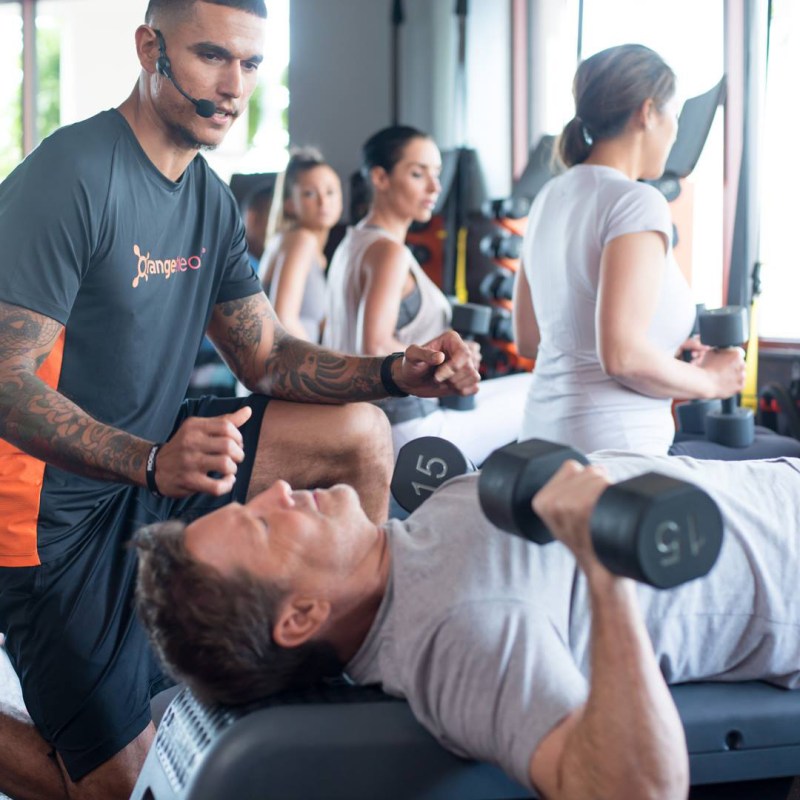
I’ve been running, doing calisthenics, and occasionally lifting free weights for more than a dozen years and have been generally fit for my entire adult life, but I recently accepted the fact that I had plateaued in terms of building muscle, extending run distance, and shedding pounds. In my later 30s, my solo fitness regimen wasn’t working well enough, so I decided to head back to the gym for the first time in a decade. But instead of wandering from bench to machine to pull-up bar to mat, this time I decided to take classes.
Like many men, I’d long been hesitant to try a fitness class. Most seemed designed primarily for women, and I wasn’t sure where to find a class that would specifically suit my goals (namely adding some muscle, shedding a percent or two of body fat, and extending my running distance). But I wanted to make the most of what little free time I had, and I didn’t feel like shelling out the $70 hourly rate of personal trainers in my area.
After some research, I chose an Orangetheory Fitness center up the street. It was time to stop going it alone.

Orangetheory classes mix running, rowing, and other aerobic activities with weight, resistance, and core strength training. No two sessions you attend are ever exactly the same. Attend a workout there two or three times a week and just about every muscle group in your body will be activated, with your heart getting pushed well into the productive range for cardio strength development. The company’s name comes from your goal during a class, which is to have your heart rate in an “orange zone” calculated based on your age, weight, and height and that’s monitored in real time by a monitor you wear.
During the first half of that first class, as I took to the treadmill, I began to think I’d been right all along. The session was made up of at least a dozen women, while I was one of only two men. The exercises the women were doing —one half of each class does cardio while the other half works on strength training — looked too easy, speaking frankly. Most participants were using light weights and slender resistance bands. And as for running on a treadmill, I’d been running on roads and trails for years, and surely that was the better workout, no? How was I going to rise above my fitness plateau like this?
Then the coach started adding sprints (“all-outs” in the jargon) and varying elevation to the run. Soon, my heart rate was well into that orange range and the calorie counter was cruising. After a half-hour of intense running, the class swapped sides and it was my turn to go through the battery of exercises laid out for the day. And here’s where the true benefits of a fitness class became evident. Within a few minutes of me beginning the series of exercises (such as suitcase squats, shoulder presses, and chest work using TRX straps) the coach came over to give me pointers on my form and to swap in a pair of much heavier barbells. With my form corrected and the added weight, I found myself well outside of my comfort zone and surprised at how genuinely challenging a few of the exercises were. My years of solo workouts had done plenty for my biceps and chest, it turned out, but my shoulders needed some serious catching up. And I guess I’d rather forgotten to do squats for, well, forever.

I’ve now been to dozens of classes at Orangetheory and I’m hooked. However, I would completely understand if that brand’s specific approach wasn’t a fit for someone. That’s why you have to shop around some until you find the right fitness class for your goals as well as for your personality. The results you’ll get are worth the search.
Chris Hoffman — an RRCA certified running coach, a NASM certified personal trainer, and the co-founder and owner of Formula Running Center, a fitness studio in Arlington, Virginia — says gym classes create an “increase in motivation and accountability. Whether it’s receiving positive reinforcement or engaging in a little friendly competition, you can’t deny that you are going to work out harder and push yourself further when there is someone else there keeping you accountable and encouraging you to be at your best. Group classes foster a community of like-minded individuals that are there to support each other on their
Classes also give you the benefit of expert instruction and access to high-quality equipment without the expense of a one-on-one trainer or the commitment to a gym membership. “If you’re training on your own,” says Hoffman, “you run the risk that you are not executing exercises using the proper form and technique, which could lead to injury. You also may not have structured your training program in a manner that allows you to most effectively reach your performance goals. Participating in group training classes that are run and structured by professionals allows you to reap the benefits of their expertise, ensuring that you are executing the exercises properly to help you stay out of the doctor’s office. In addition, most coaches and trainers, like Formula Running Center’s coaches and staff, will help you structure your workouts in a manner best suited to meet your performance and fitness goals.”
And again, don’t give up on classes if the first few you try don’t seem a hit. Hoffman encourages would-be fitness class participants to “do your research and look at the types of classes and services a studio has to offer. If you have a less than ideal experience at one studio don’t be afraid to try another. Just because one studio doesn’t meet your needs, it doesn’t mean you won’t find the fit that’s right for you.”
Try the targeted classes at Crunch, which have focuses like improved speed and agility, targeted core training, or mixed martial arts and boxing-themed workouts. Try a cycling- or running-centric class at Equinox if you’re ready to shell out a bit more for highly personalized attention. Try Fit Body Bootcamp if you only have a half-hour to spare in the name of fitness. Just try something — you’ll be amazed at how much of a game-changer it is to work out with peers and with guidance.
Also, most places offer the first class for free, so there’s nothing to lose, but potentially much to gain.



